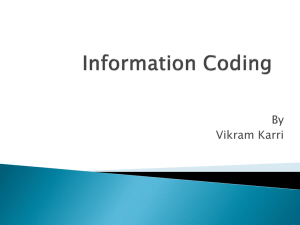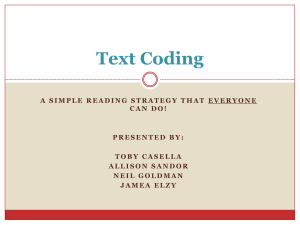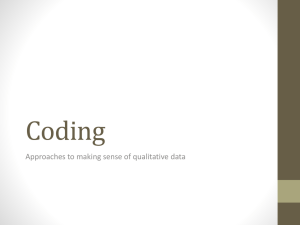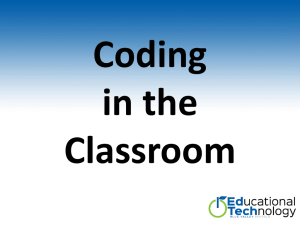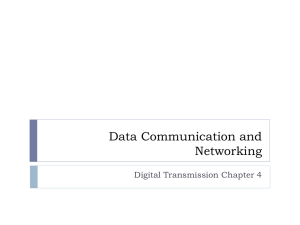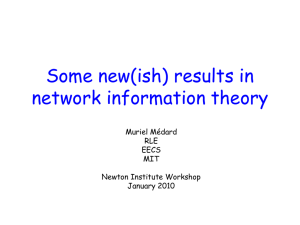PowerPoint - Iowa State University
advertisement
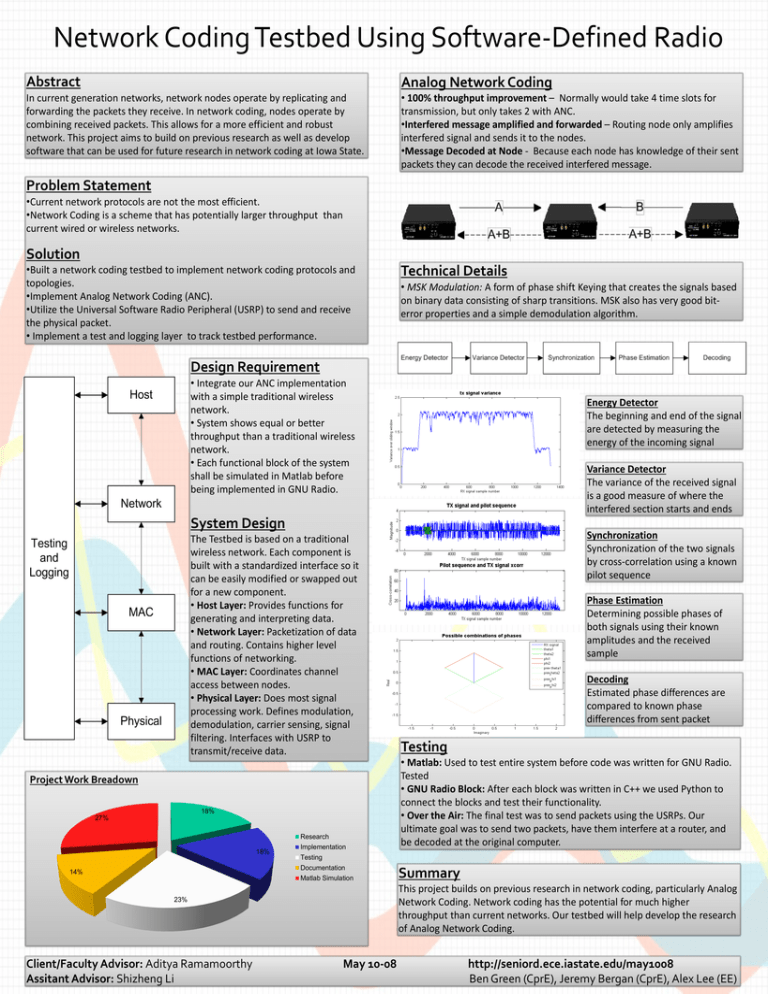
Network Coding Testbed Using Software-Defined Radio Abstract Analog Network Coding In current generation networks, network nodes operate by replicating and forwarding the packets they receive. In network coding, nodes operate by combining received packets. This allows for a more efficient and robust network. This project aims to build on previous research as well as develop software that can be used for future research in network coding at Iowa State. • 100% throughput improvement – Normally would take 4 time slots for transmission, but only takes 2 with ANC. •Interfered message amplified and forwarded – Routing node only amplifies interfered signal and sends it to the nodes. •Message Decoded at Node - Because each node has knowledge of their sent packets they can decode the received interfered message. Problem Statement •Current network protocols are not the most efficient. •Network Coding is a scheme that has potentially larger throughput than current wired or wireless networks. Solution •Built a network coding testbed to implement network coding protocols and topologies. •Implement Analog Network Coding (ANC). •Utilize the Universal Software Radio Peripheral (USRP) to send and receive the physical packet. • Implement a test and logging layer to track testbed performance. Technical Details • MSK Modulation: A form of phase shift Keying that creates the signals based on binary data consisting of sharp transitions. MSK also has very good biterror properties and a simple demodulation algorithm. Design Requirement • Integrate our ANC implementation with a simple traditional wireless network. • System shows equal or better throughput than a traditional wireless network. • Each functional block of the system shall be simulated in Matlab before being implemented in GNU Radio. Energy Detector The beginning and end of the signal are detected by measuring the energy of the incoming signal Variance Detector The variance of the received signal is a good measure of where the interfered section starts and ends System Design The Testbed is based on a traditional wireless network. Each component is built with a standardized interface so it can be easily modified or swapped out for a new component. • Host Layer: Provides functions for generating and interpreting data. • Network Layer: Packetization of data and routing. Contains higher level functions of networking. • MAC Layer: Coordinates channel access between nodes. • Physical Layer: Does most signal processing work. Defines modulation, demodulation, carrier sensing, signal filtering. Interfaces with USRP to transmit/receive data. Project Work Breadown 18% 27% 18% 14% Research Implementation Testing Documentation Matlab Simulation Phase Estimation Determining possible phases of both signals using their known amplitudes and the received sample Decoding Estimated phase differences are compared to known phase differences from sent packet Testing • Matlab: Used to test entire system before code was written for GNU Radio. Tested • GNU Radio Block: After each block was written in C++ we used Python to connect the blocks and test their functionality. • Over the Air: The final test was to send packets using the USRPs. Our ultimate goal was to send two packets, have them interfere at a router, and be decoded at the original computer. Summary This project builds on previous research in network coding, particularly Analog Network Coding. Network coding has the potential for much higher throughput than current networks. Our testbed will help develop the research of Analog Network Coding. 23% Client/Faculty Advisor: Aditya Ramamoorthy Assitant Advisor: Shizheng Li Synchronization Synchronization of the two signals by cross-correlation using a known pilot sequence May 10-08 http://seniord.ece.iastate.edu/may1008 Ben Green (CprE), Jeremy Bergan (CprE), Alex Lee (EE)


